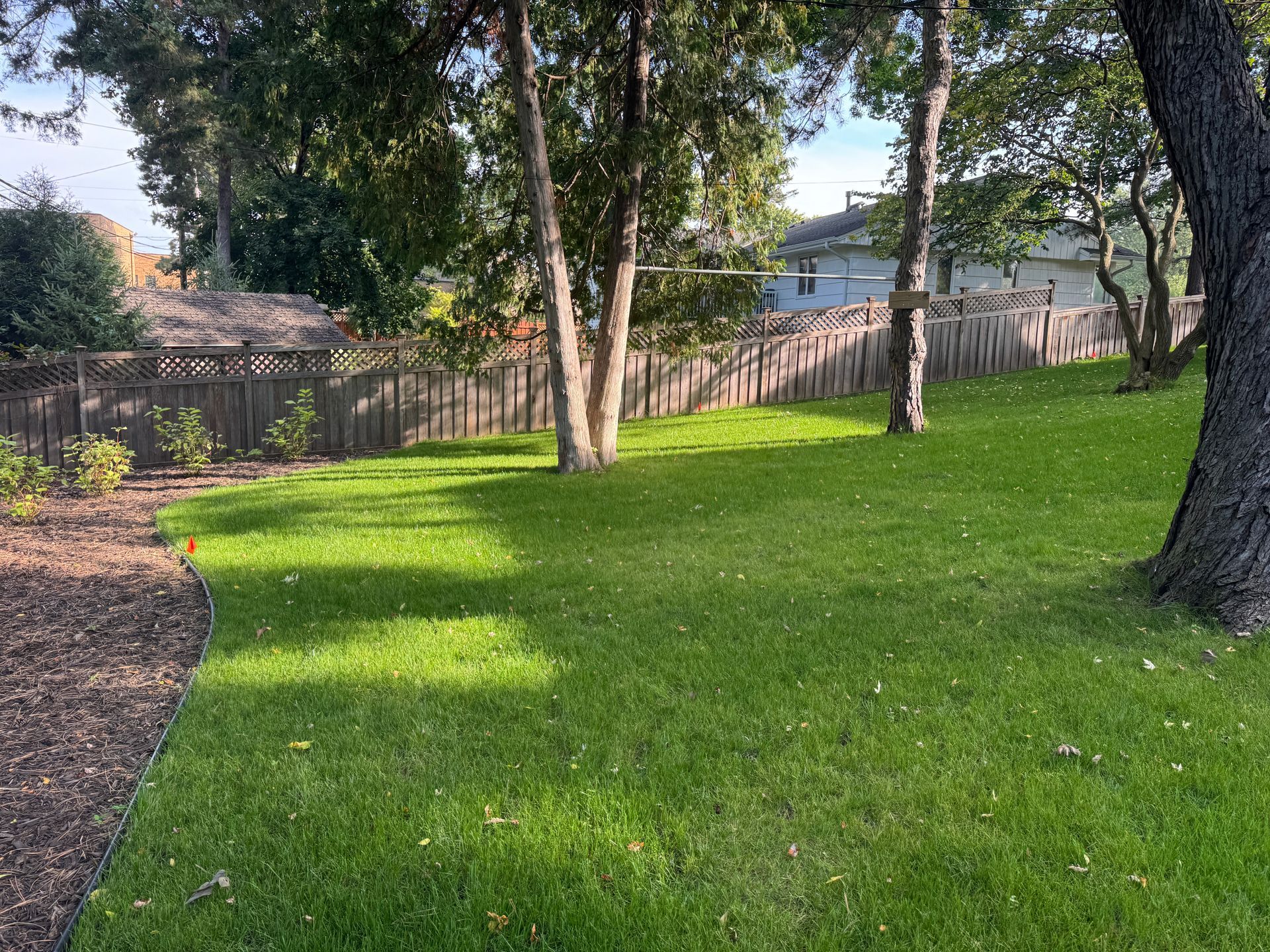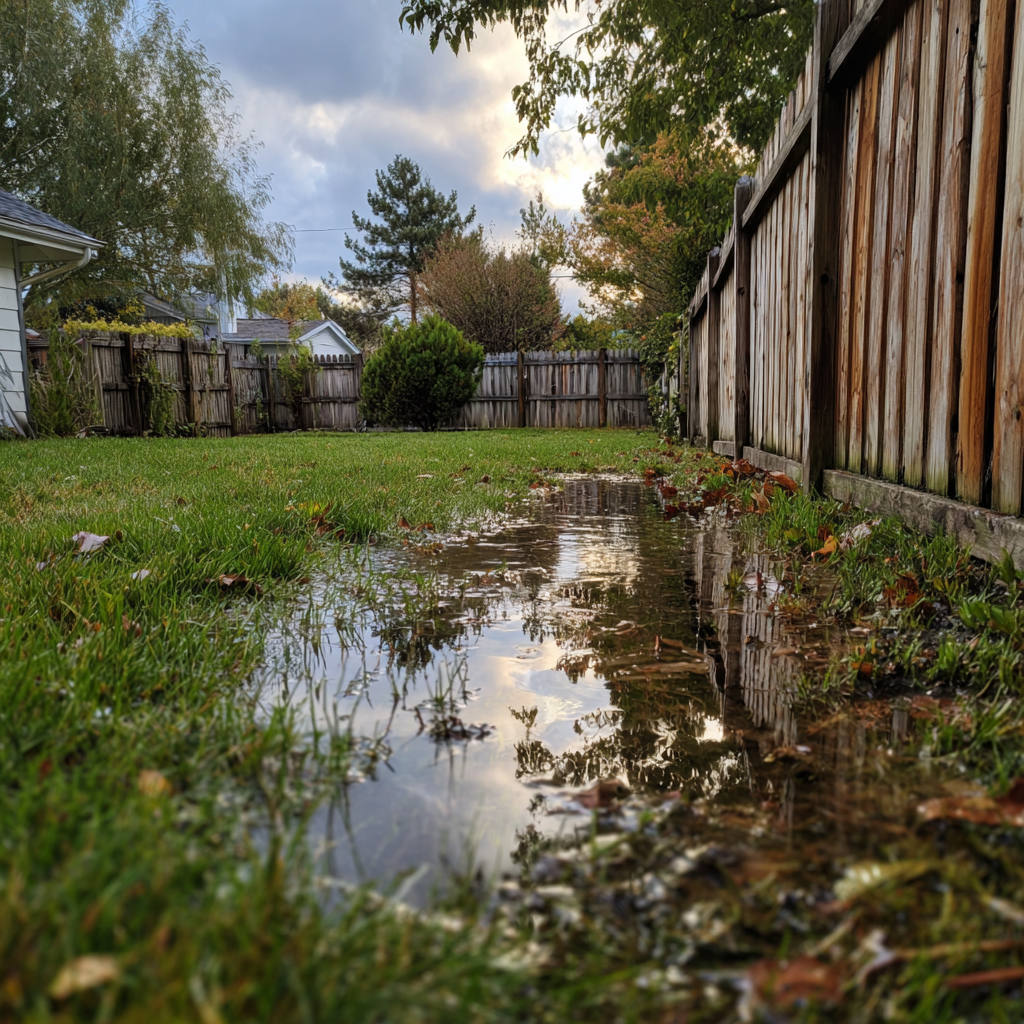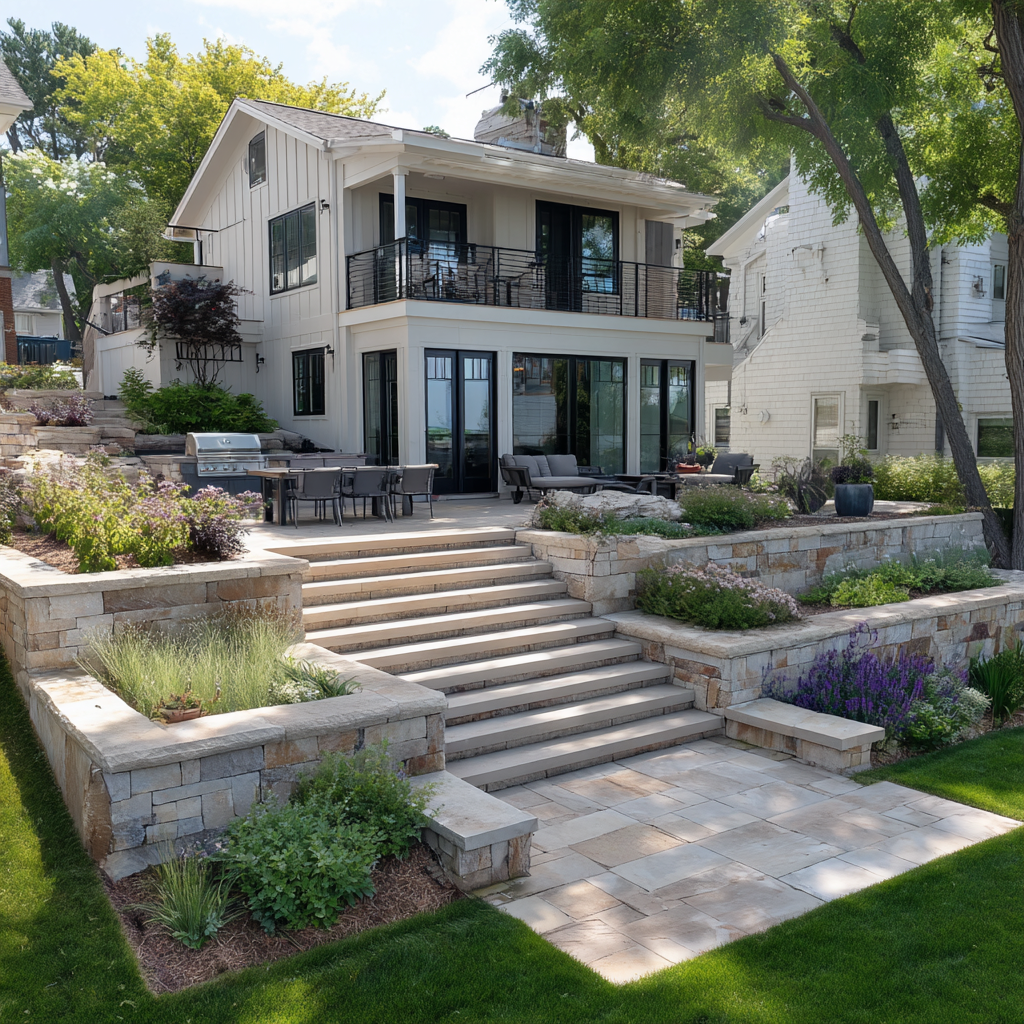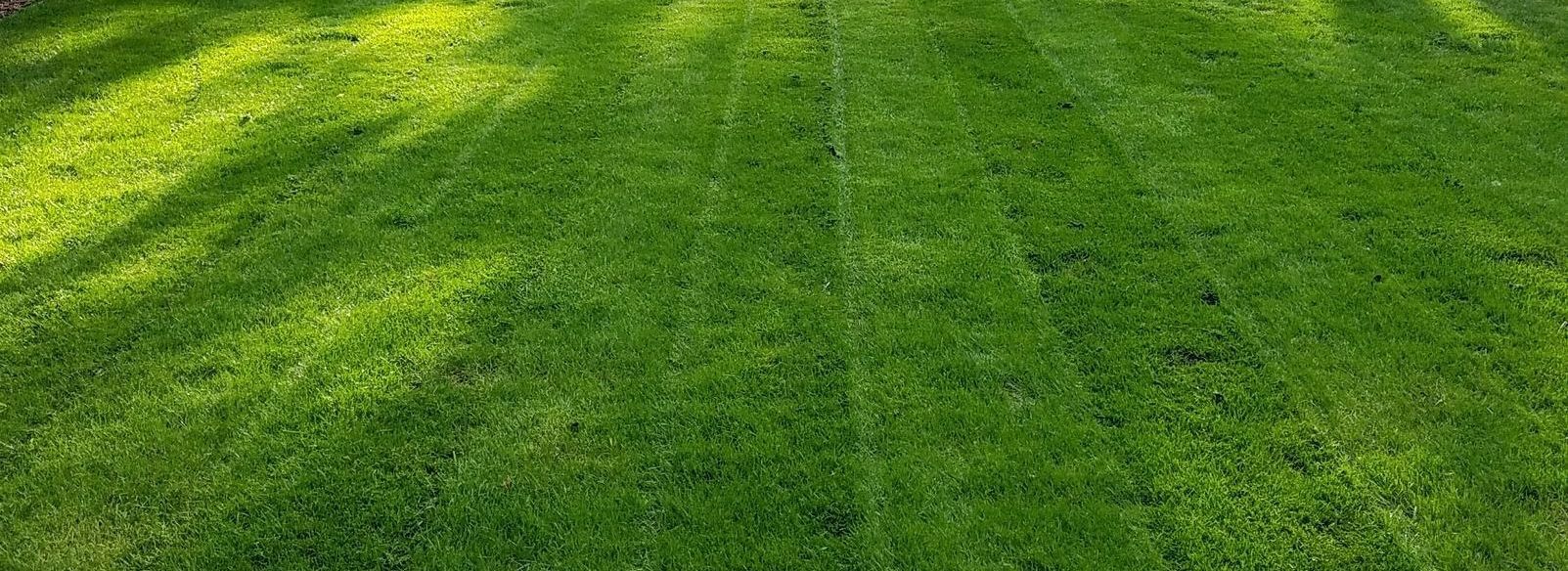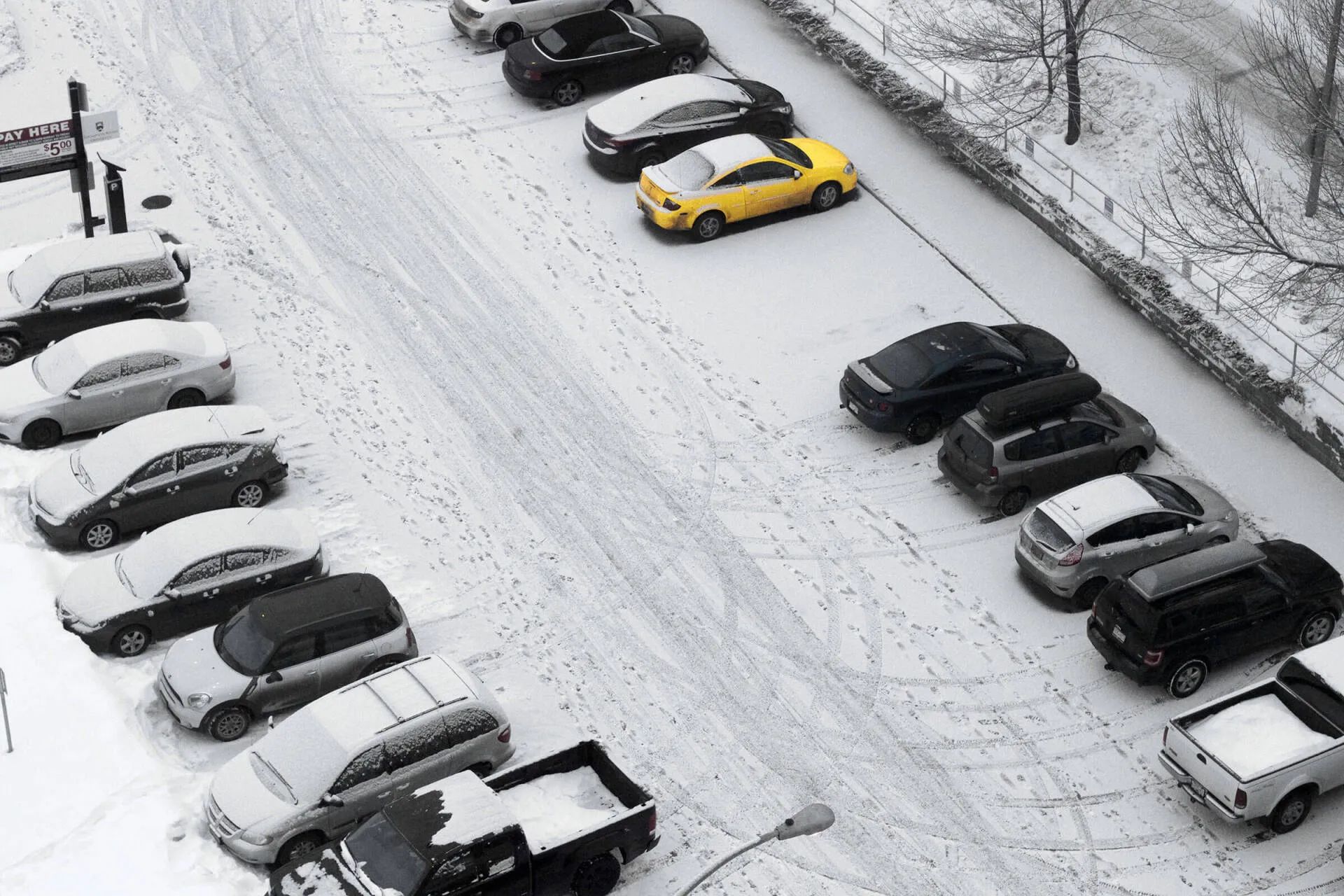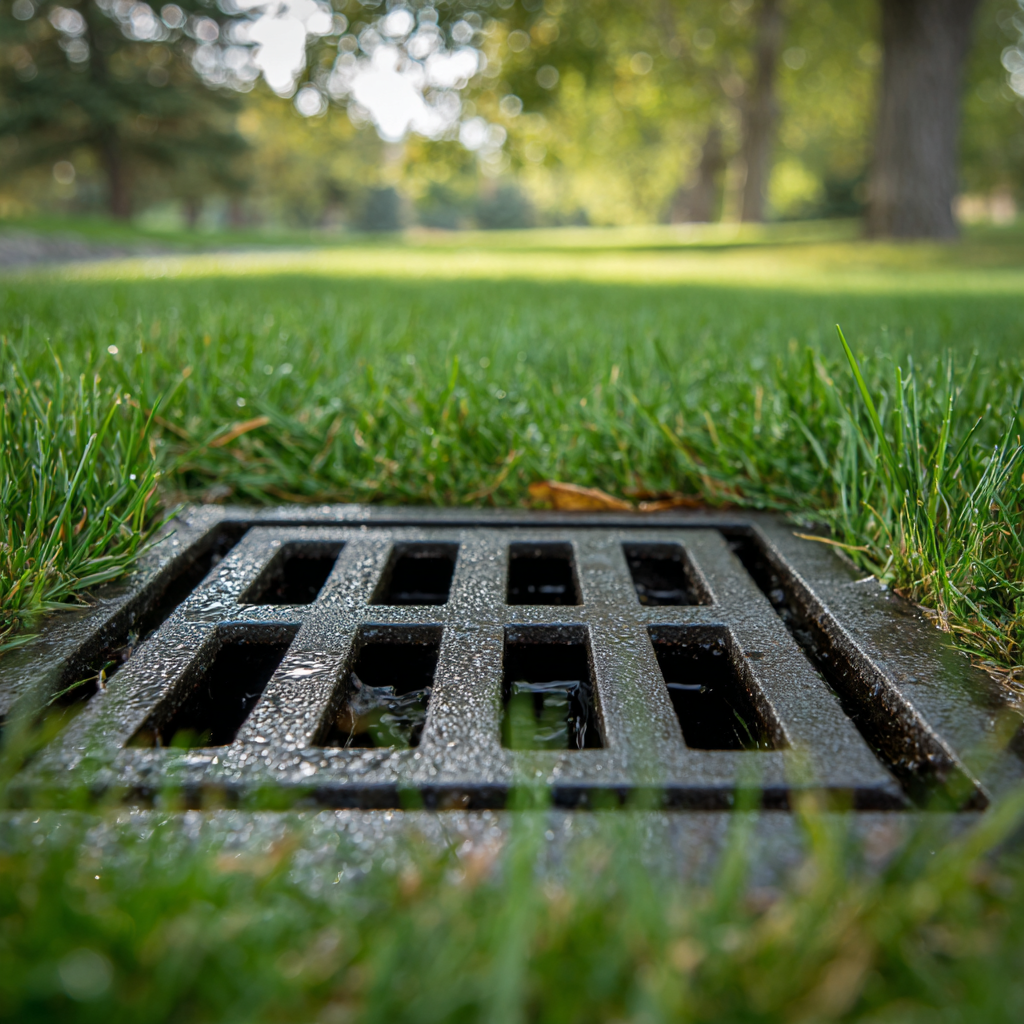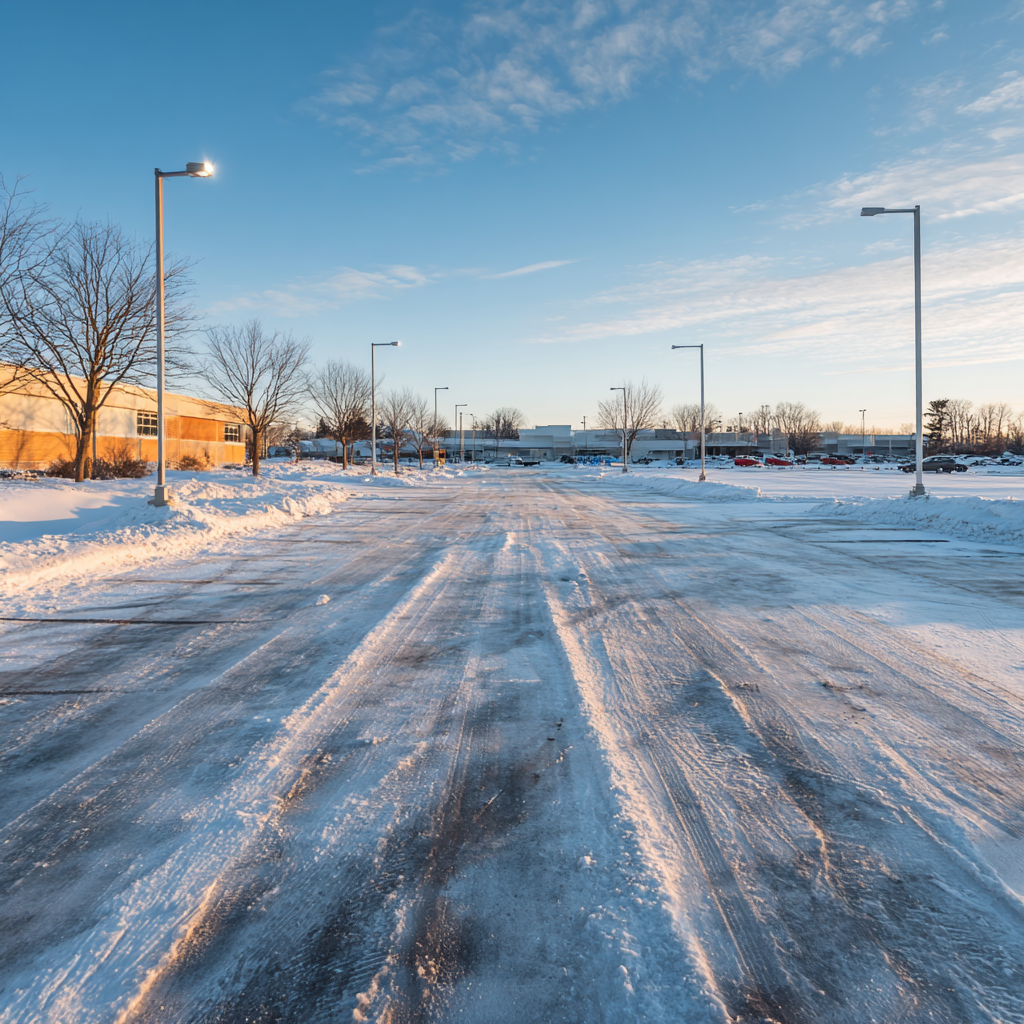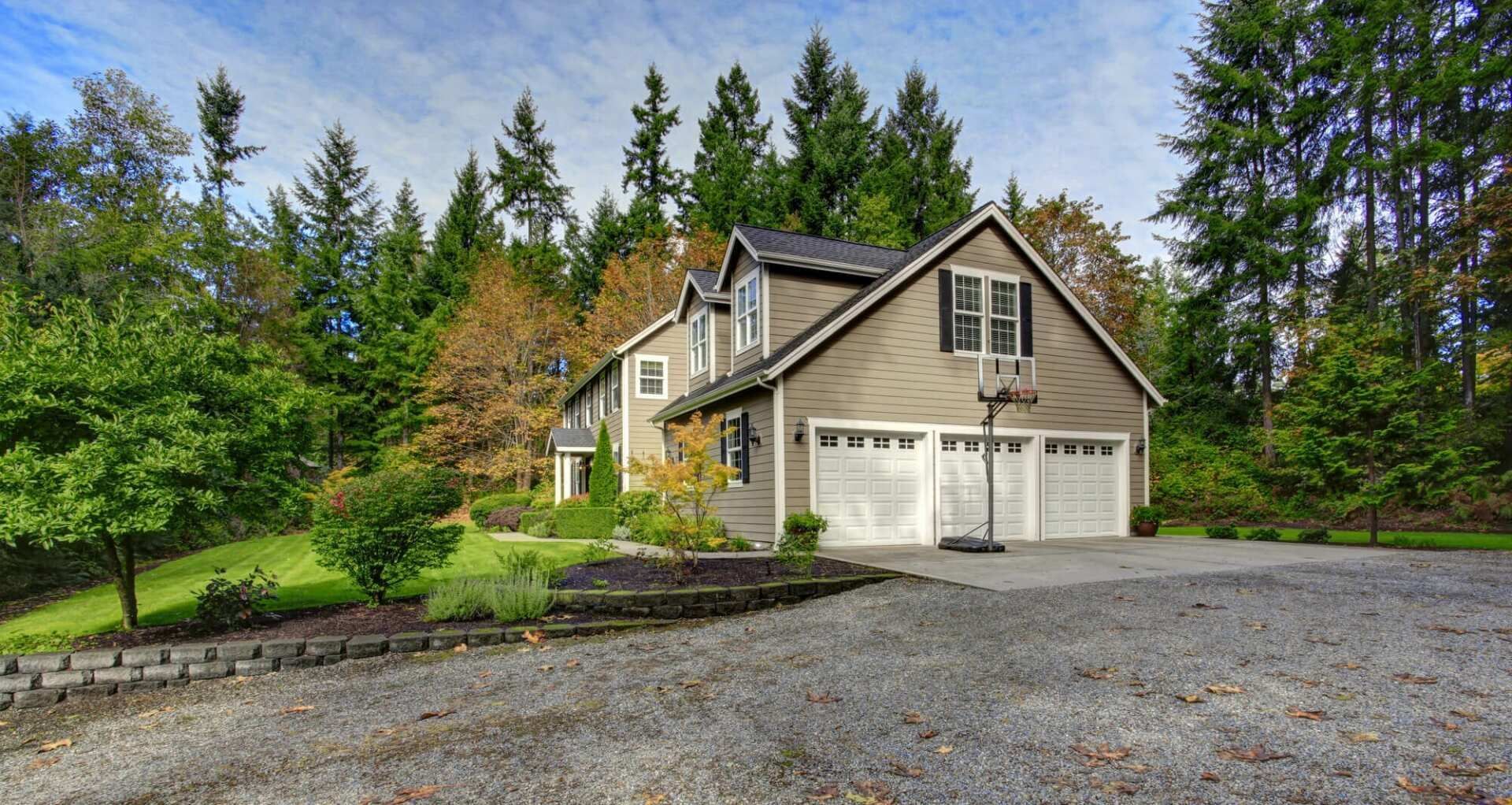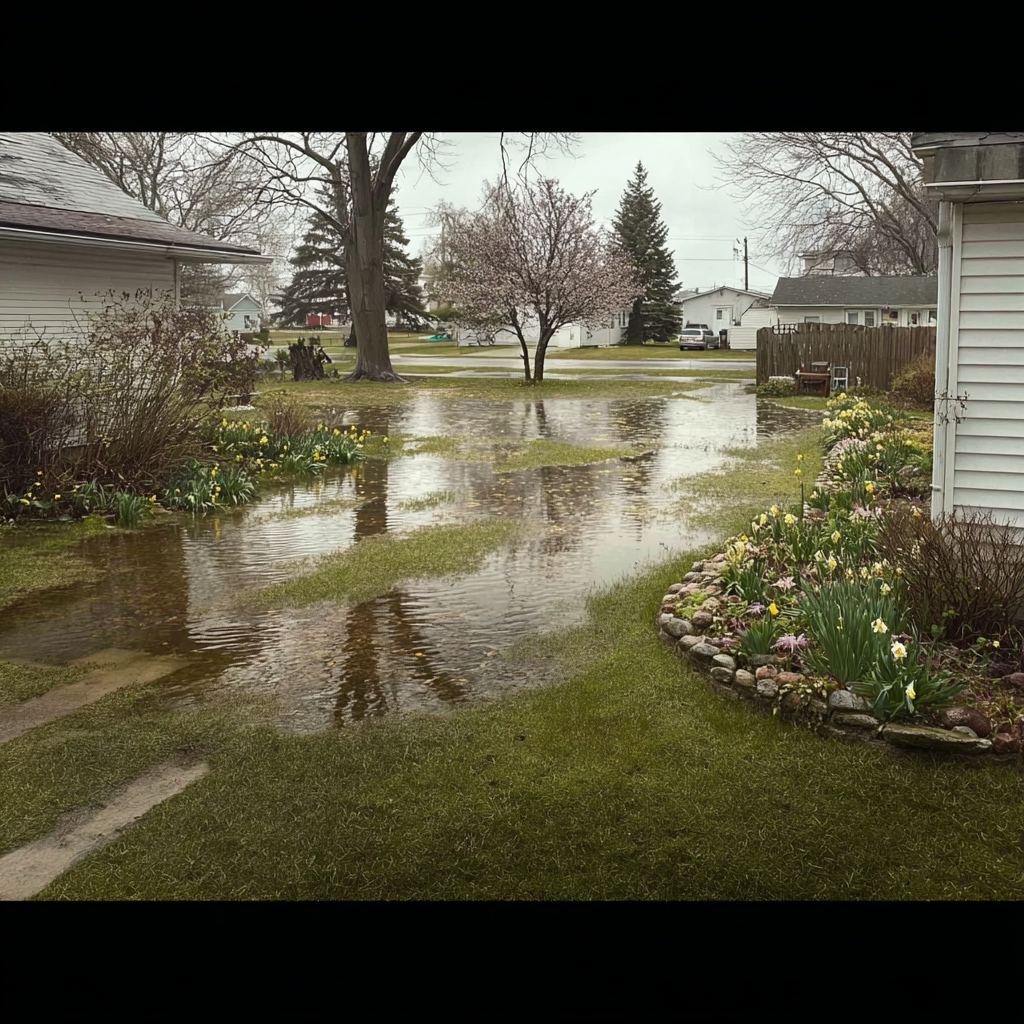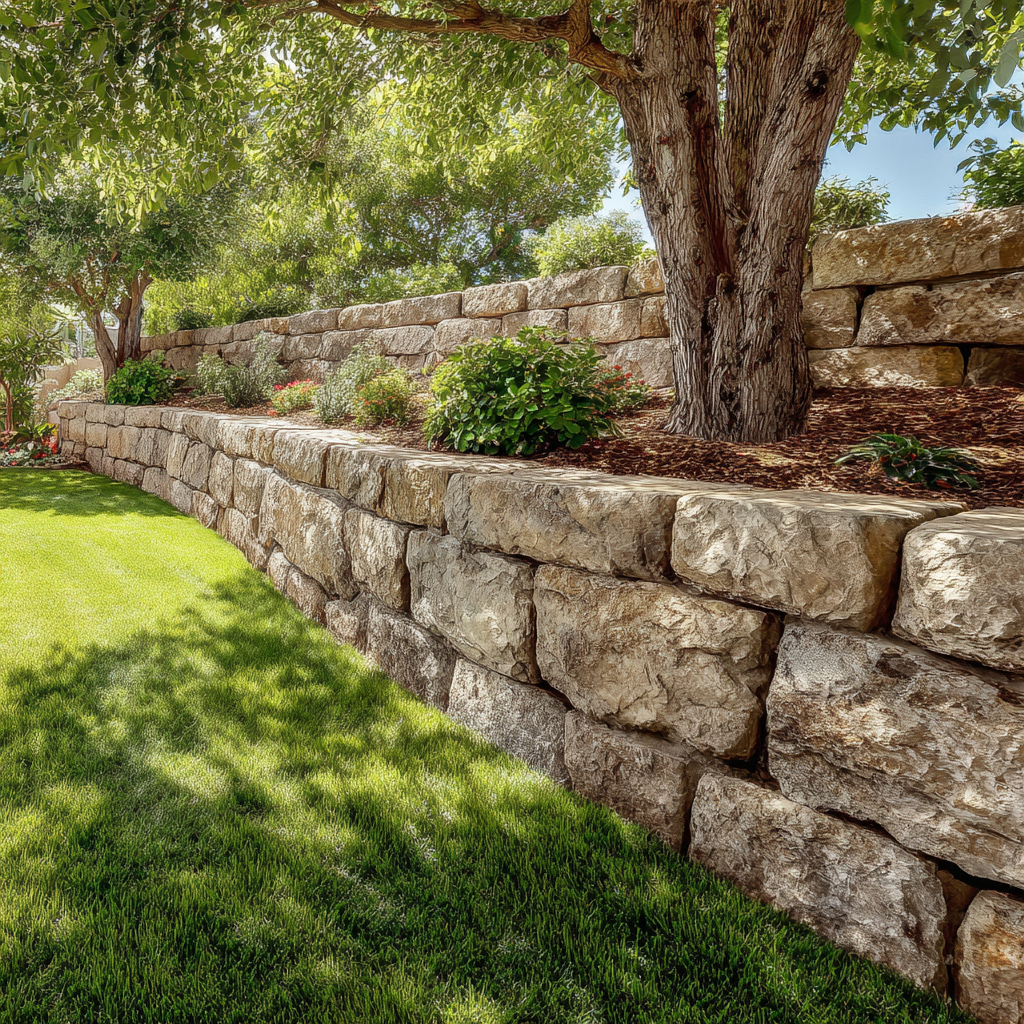Lawn Seeding and Overseeding Tips for MN Lawns – How to Correctly Time Seeding and Crabgrass Preventer Applications in the Spring
Expert Advice from a MN Turf Professional
My name is Kent Gliadon and I received my bachelor’s degree in Turf Science at the University of Minnesota (that’s me above). Since then, I’ve been working to help customers improve their lawns in the Minneapolis and St. Paul metro area for over 20 years, as the owner of
KG Landscape
, located in Blaine MN.
I wrote this article to provide great information and tips that will help you achieve a better lawn. Whether you hire us or do it yourself, I want to help you spend your time or money on lawn improvement inputs that will actually work!
If you’re looking to skip reading this and just want a quote for our lawn care services, follow this link to request an online quote, or check out our
Lawn renovation
or
fertilizer and weed
control pages.
When is The Best Time of Year to Seed Your Lawn in Minnesota?
Late Summer is the Best Time to Plant New Grass Seed in MN
Generally, people tend to say that fall is the best time of the year to seed your lawn here in MN, but that's not actually true! For reasons that we'll explain in great detail in the sections below,
the best time for cultivating and establishing new lawn grasses in MN, is from
mid-August through mid-September.
Since fall typically begins on either Sept 22 nd or 23 rd , it’s much more accurate to say that late summer is in fact the best time of the year for seeding lawns in Minnesota. We'll discuss more detail as to why it's important not to wait too long into the fall months to start planting new grass seed.
Why is Late Summer the Best Time for Seeding and Overseeding Grass in MN?
1.
Grasses that germinate in late summer will begin their development in the ideal growing conditions of fall, and then continue to grow and mature throughout the following spring months.
This gives grasses that were seeded in the fall, (2) seasons to develop and mature (ex. Grow deeper and more developed root systems), before facing the challenges of surviving the heat and drought stresses of summertime. Whereas, grass that is seeded in the springtime will only have (1) season to mature before facing summer.
2. The temperatures in the months of September and October are ideal for growing new grass. Generally, the soil temps are still very warm at 50 degree or more, while the air temps are cooling down into the ideal growing temperature range of 60-75 degrees Fahrenheit for our cool season grasses.
So, if you apply grass seed in Mid-August and the new grass seed takes roughly 3 weeks to germinate, then the new seedlings with have all of September and October to grow up and fill in.
3. The Cooler fall weather also helps slow down evaporation rates, which helps the soils to stay wet longer than they would during the heat of the mid-summer months.
4. Lastly, fall is a great time to seed because your spring crabgrass preventer treatment has since worn off and broken down, meaning that the grass preventer will no longer cause problems with growing new grass seed.
How Late in the Fall Can You Plant Grass Seed?
Apply Grass Seed no later than October 1st for Best results (for Fall Establishment)
New grass seed needs time to mature in order to survive the coming winter (to become winter hardy).
Since Kentucky Bluegrass takes at least 21 days to germinate, it is important to get your seed down early enough to allow for at least 3-4 weeks of growth prior to the ground freezing. 6-8 weeks of growth is even better than 4 weeks of course.
Generally speaking, in MN you should get your seeding done before October 1 st for best results . In MN, we may get 1-3 weeks of growing time into November before the ground freezes, but we can’t count on it.
Spring Lawn Seeding and Overseeding Works Great Too
You Don't Have to Wait Until Fall to Start Improving Your Lawn
Many of our customers don’t love the idea of waiting until late summer/fall to fix up their yards.
As long as you get an early jump on it, spring seeding can work great and be timed to still allow for crab grass pre-emergent to be applied, without causing any issues with your new grass seed. To learn more, check out our detailed article on
When to Apply Crab Grass Preventer in MN.
Benefits of Overseeding and Fixing up Your Lawn in the Spring vs. Fall
You get to start enjoying a thicker and greener lawn right away in springtime and enjoy your improved lawn for the entire season, rather than waiting to get started until fall.
The temperatures and weather conditions in our MN springs are nearly as ideal as the conditions in the fall for germinating and growing new grass seed.
The main difference between spring vs. fall seeding, is that the ideal temperatures in spring are followed by our hot and dry summer conditions, which means you’ll need to be diligent with watering.
If you have a lawn irrigation system, sprinklers, or if you are willing to water regularly as needed during the summer months, this concern can be mitigated and should not deter you from fixing up your lawn with seeding work in the spring
Does Crabgrass Preventer Effect Grass Seed?
Yes, Crabgrass Preventer Effects Grass Seeds
Crabgrass preventer also prevents the seeds of the desirable cool season grasses we use in MN for germinating(Kentucky bluegrass, perennial ryegrass and fescues). So if you apply grass seed within 8-12 weeks after you put down crabgrass preventer, sorry very little if any of your new grass seed will grow.
Dithiopyr is active ingredient of the brand name pre-emergent called Dimension. Dimension is likely the most popular crabgrass preventer used in MN.
Dithiopyr is active ingredient of the brand name pre-emergent called Dimension. Dimension is likely the most popular crabgrass preventer used in MN.
Dithiopyr essentially creates a thin layer of soil at the very surface of the treated areas of the yard, which contains concentrated enough levels of pre-emergent to actually prevent germination.
How Long Do I Need to Wait to Put Down Grass Seed After Applying Crabgrass Preventer?
Generally speaking,
you should not overseed a lawn for 3 months (12 weeks after) applying crabgrass prevente
r
in MN., which is what the label for Dithiopyr will tell you, see a snip from the dithiopyr label below.
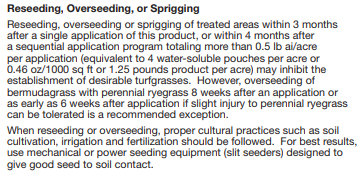
Is there Any Way to Grow Grass Seed Without Waiting for 12 Weeks After Applying Crabgrass Preventer?
If you have any areas that need seeding repairs, you can put down 1-2” of fresh topsoil that hasn’t been treated with crabgrass pre-emergent. If the seed is in contact with clean, non-treated soil during germinating it will grow just fine, even if the soil below has been treated with crabgrass preemergent
Also, mechanically breaking through the top thin layer of soil where the dithiopyr is bonded to the soil can reduce the wait time needed before overseeding your lawn. Aerating your lawn is a great way to break through the effected top layer and allow for soil/seed contact with the unaffected soils below.
Also, mechanically breaking through the top thin layer of soil where the dithiopyr is bonded to the soil can reduce the wait time needed before overseeding your lawn. Aerating your lawn is a great way to break through the effected top layer and allow for soil/seed contact with the unaffected soils below.
Is there any Type Crabgrass Preventer that Can be Used During Seeding?
If not managed correctly, weeds can cause major problems during and after lawn seeding. Weeds easily can take advantage of the TLC and watering that you provide to help your new grass seeds grow. These lawn weeds can take over and choke out young grass seedlings and negatively impact your lawn renovation results.
To prevent this, it's very important to kill off problematic lawn weeds prior to seeding. We also recommend treating newly seeded lawn spaces with broadleaf herbicide / weed killer after the new seeds are well established, roughly 4-6 weeks after grass seed germination (see the herbicide label for instructions). The weed killer treatment after grass establishment will eliminate any new lawn weeds that may have grown in with the grass seed and will give your new grass the best chance to thrive. Check out fertilizer and Weed control page to learn more about our weeds control services.
There's a Pre-emergent Called Tupersan that Can be Used During Seeding to Prevent Weeds
Tupersan is the name of a pre-emergent herbicide that can be used at the same time as seeding to prevent the germination of crabgrass and other weed seeds. Tupersan, does not impact the germination of the cool season grasses that we use for our lawns. Why not just used Tupersan instead of dithiopyr then? We only use Tupersan when seeding because. Tupersan is more expensive than dithiopyr and essentially doesn’t work as well, which is why we would only use Tupersan during seeding and overseeding work, rather than as a replacement for dithiopyr for regular crabgrass pre-emergent treatments.
How to Achieve the Best Results When Seeding or Overseeding Grass in the Spring
Timing Your Seeding and Crabgrass Preventer Treatments Correctly is Crucial for Best results
Seed as Early in Spring as Possible. We highly recommend seeding as early as possible, first thing in the spring after the snow melts and the ground thaws, even before the temperatures are warm enough for the seed to germinate. This will ensure that the seed is in the ground ready to germinate as soon as the temps warm up.
Most importantly, if grass seeds germinate early enough in the springtime, you'll still have time to put down crabgrass preventer after the new seeds have emerged.
Double Aerate and Overseed Your Lawn At KG Landscape, we recommend a double aeration and overseeding service to help improve your lawn. This means that we core aerate the entire yard two(2) times over the same visit and then apply seed right afterwards. Aerating the yards two times in opposite directions makes twice as many small holes in the yard, where new grass seed can germinate, than a single pass with an aerator does.
We’ve found that this additional lawn aerating prior to overseeding, that we refer to as double pass aerating, provides significantly improved seed germination results vs. a standard/single pass lawn aeration.
Keep the top 1” Soil layer Moist after Seeding . Water every day, twice a day if needed to keep soil wet as consistently as possible. The goal is to keep the top 1” soil layer wet, which allows the grass seed to imbibe water (soak up water) as it prepares to geminate. You can check out our plant and seeding care guide for more information on watering new lawns.

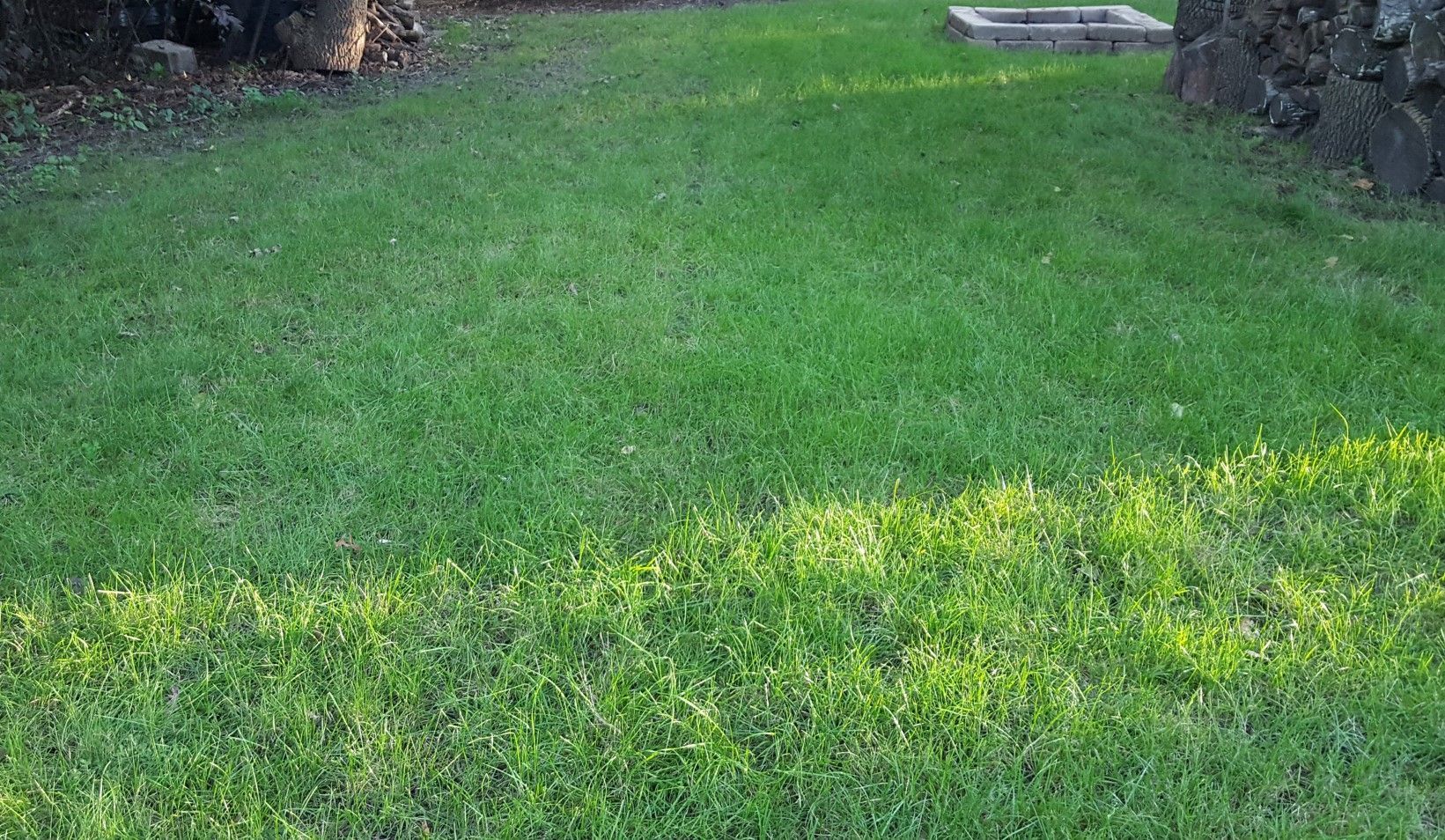
Mowing Tips Before and After Overseeding
How Long Should I Waite to Start Mowing After Overseeding?
If you’re overseeding an existing lawn, then you’ll still need to mow the grass while you’re waiting for the new seed to grow. We have some tips and recommendation regarding lawn mowing before overseeding and during the germination and seedling periods, to help achieve best results.
Mowing Tips Before to Overseeding
1)
Cut the grass as short as you can without damaging it the day before you overseed. This will buy you more time until you need to mow again after overseeding.
2) We recommend mulching the grass clippings the last time you cut the lawn prior to overseeding, instead of bagging and removing the clippings. This will add fresh organic matter to the yard, which holds water and helps keep the seed wet for longer periods between watering during germination.
If the grass is too clumpy when you cut it short, then double cut the yard in perpendicular directions using the mulching setting on your lawn mower to help chop up and evenly disperse the clippings.
Mowing Tips After Overseeding
1)
Stay off your lawn as much as possible. Walking on the lawn is not the end of the world and of course you’ll need to walk on the yard in order to mow, but the new seedlings will do better if they are not trampled constantly. Try not to heavily use your lawn for the first 4-5 weeks after overseeding if possible.
2) How long should I wait to Mow after I overseed my Lawn? Ideally, you’d wait about 2-3 weeks to mow the lawn after overseeding to give the new seed time to germinate.
3) Bag the Grass Clipping the 1st and 2nd time you mow after Overseeding. This will help prevent grass clumps from covering and smothering new seedlings. You should also wait two weeks between the 1st and 2nd lawn mowing after overseeding to reduce foot traffic on the new seedlings.
4) After your second lawn mowing after overseeding, you can go back to normal mowing practices.
2) How long should I wait to Mow after I overseed my Lawn? Ideally, you’d wait about 2-3 weeks to mow the lawn after overseeding to give the new seed time to germinate.
3) Bag the Grass Clipping the 1st and 2nd time you mow after Overseeding. This will help prevent grass clumps from covering and smothering new seedlings. You should also wait two weeks between the 1st and 2nd lawn mowing after overseeding to reduce foot traffic on the new seedlings.
4) After your second lawn mowing after overseeding, you can go back to normal mowing practices.

